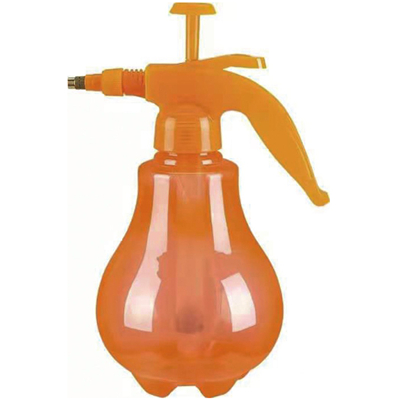Water sprayers have become indispensable tools for a wide range of applications, from gardening and agriculture to cleaning and household tasks. These versatile devices offer controlled and efficient distribution of water or other liquids. In this article, we will explore the construction of a water sprayer, examining its various components and their functions. By understanding the inner workings of a water sprayer, we can appreciate its effectiveness and potential applications.
At the core of a water sprayer lies the reservoir, which holds the liquid to be sprayed. The reservoir is typically made of durable and non-reactive materials, such as plastic or stainless steel, to ensure compatibility with different liquids. It is designed to be leak-proof and easy to refill. The capacity of the reservoir can vary, ranging from small handheld sprayers to larger backpack or wheeled sprayers, depending on the intended use.
The pump mechanism is responsible for pressurizing the liquid inside the reservoir, allowing for controlled spraying. There are two main types of pump mechanisms used in water sprayers: manual and motorized.
In manual pump sprayers, the pump is typically operated by hand. It consists of a piston or plunger that is connected to a handle. When the handle is pumped, the piston moves back and forth, creating pressure within the reservoir. This pressure forces the liquid through the sprayer's nozzle, resulting in a fine mist or spray. Manual pump sprayers are lightweight, portable, and require no external power source, making them suitable for small-scale applications.
Motorized pump sprayers are equipped with an electric or gas-powered motor that generates the necessary pressure to spray the liquid. The motor drives a diaphragm or piston pump, which draws liquid from the reservoir and pressurizes it. Motorized sprayers are more powerful and efficient, making them suitable for larger areas or professional use. They often feature adjustable pressure settings to cater to different spraying requirements.
The nozzle is a critical component of a water sprayer, as it determines the spray pattern and flow rate. Different nozzles are designed to produce specific spray patterns, such as a narrow stream, fine mist, or wide cone. Some sprayers come with interchangeable nozzles, allowing users to customize the spray pattern based on their needs.
Many modern water sprayers feature an adjustable nozzle, which allows users to switch between different spray patterns. By rotating the nozzle or adjusting its settings, one can easily switch from a concentrated stream for targeted spraying to a wide-angle mist for broader coverage.
Some water sprayers may include additional features to enhance functionality. For example, some models may have a trigger lock mechanism, which allows for continuous spraying without the need to keep the trigger pressed. Others may have a built-in pressure relief valve to prevent over-pressurization of the reservoir. These added features contribute to user convenience and safety.
To ensure a leak-proof operation, water sprayers incorporate seals and gaskets at various points, including the pump mechanism, nozzle, and reservoir connections. These seals prevent liquid from leaking or escaping, maintaining the desired pressure and preventing wastage.
Water sprayers are versatile tools that rely on a well-designed construction to effectively distribute liquids for various purposes. The combination of a sturdy reservoir, efficient pump mechanism, versatile nozzle, and reliable seals ensures their functionality and performance. Whether used in gardening, cleaning, or other applications, understanding the inner workings of a water sprayer allows users to make informed decisions and utilize this valuable tool to its fullest potential.










